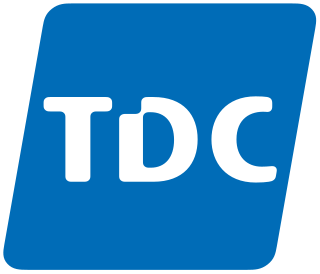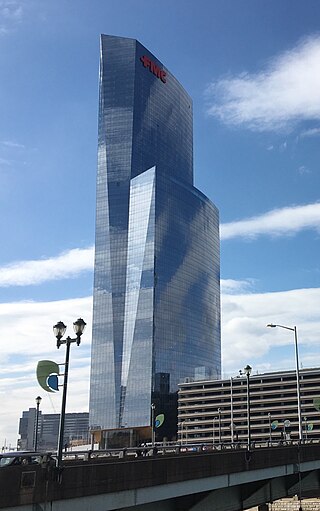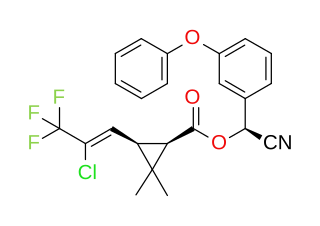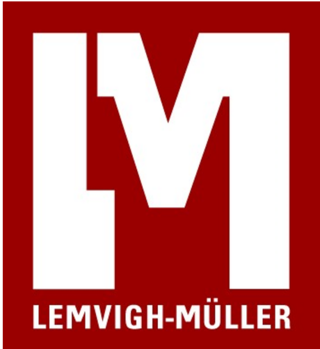
Aarhus University is a public research university with its main campus located in Aarhus, Denmark. It is the second largest and second oldest university in Denmark. The university is part of the Coimbra Group, the Guild, and Utrecht Network of European universities and is a member of the European University Association.

Bifenthrin is a pyrethroid insecticide. It is widely used against ant infestations.

The North Jutlandic Island, Vendsyssel-Thy, or Jutland north of the Limfjord is the northernmost part of Denmark and of Jutland. It is more common to refer to the three traditional districts of Vendsyssel, Hanherred, and Thy. The area has been intermittently a tied island and, during modern times, was not surrounded by water until a storm in February 1825, which severed the region from the remainder of Jutland and caused a water connection between the North Sea and the western end of the Limfjord. Hence, it is traditionally regarded as a part of Jutland rather than a separate island.

TDC Holding A/S or TDC Group is a Danish telecommunications company dating back to 1879. TDC Group is the largest telecommunications company in Denmark. The company's headquarters are located in Copenhagen.

The rail transport system in Denmark consists of 2,633 km of railway lines, of which the Copenhagen S-train network, the main line Helsingør-Copenhagen-Padborg, and the Lunderskov-Esbjerg line are electrified. Most traffic is passenger trains, although there is considerable transit goods traffic between Sweden and Germany.

Aarhus Stadium is an association football stadium in Aarhus, Denmark which has been the home ground of Aarhus Gymnastikforening since the 1920s. With a current capacity of 19,433, it is the third largest football stadium of any football team in Denmark. It is part of the sports complex, known as Aarhus Sports Park, that is run by Ceres Park & Arena.

FMC Corporation is an American chemical manufacturing company headquartered in Philadelphia, Pennsylvania, which originated as an insecticide producer in 1883 and later diversified into other industries. In 1941 at the beginning of US involvement in WWII, the company received a contract to design and build amphibious tracked landing vehicles for the United States Department of War, and afterwards the company continued to diversify its products. FMC employs 7,000 people worldwide, and had gross revenues of US$4.7 billion in 2018.

Coop amba, formerly FDB, is a cooperative based in Denmark. The coop has 1.9 million members and three subsidiaries. The Coop Danmark subsidiary operates the retail store chains of Kvickly, Brugsen, SuperBrugsen, Dagli'Brugsen and 365discount as well as the furniture company FDB Møbler. They previously ran the now discontinued chains Irma, Fakta & LokalBrugsen. The last two subsidiaries comprise Coop Bank and Coop Invest.

Cyhalothrin is the ISO common name for an organic compound that, in specific isomeric forms, is used as a pesticide. It is a pyrethroid, a class of synthetic insecticides that mimic the structure and properties of the naturally occurring insecticide pyrethrin which is present in the flowers of Chrysanthemum cinerariifolium. Pyrethroids such as cyhalothrin are often preferred as an active ingredient in agricultural insecticides because they are more cost-effective and longer acting than natural pyrethrins. λ-and γ-cyhalothrin are now used to control insects and spider mites in crops including cotton, cereals, potatoes and vegetables.

Methomyl is a carbamate insecticide introduced in 1966. It is highly toxic to humans, livestock, pets, and wildlife. The EU imposed a pesticide residue limit of 0,01 mg/kg for all fruit and vegetables.

Aksel (Axel) Einar (Ejnar) Utzon-Frank was a Danish sculptor and professor at the Royal Danish Academy of Fine Arts. During his lifetime, he produced many sculptures, some of which stand as public monuments. Utzon-Frank was son of Jens Christian Frank and Anna Cathrine Utzon. Anna Cathrine was sister to the grandfather of Pritzker Prize-winning architect Jørn Utzon.
Buddhism is a minority religion in Denmark with approximately 64,000 members (1.1%) in 2018.

The first high-speed railway in Denmark was the Copenhagen–Ringsted Line, completed in late 2018 and opened in 2019. Further high-speed lines are currently under planning.

Magasin is a Danish chain of department stores. It has seven department stores with its flagship store located on Kongens Nytorv in Copenhagen. The company is a subsidiary of the German department store retailer Peek & Cloppenburg Düsseldorf, Magasin du Nord has been a founder and remained a member of the International Association of Department Stores since 1928.
Bech-Bruun is a Danish law firm with offices in Copenhagen and Aarhus. As of 2023, the firm has 64 partners and almost 600 employees. It is described as one of the "Big Four" in the Danish market for legal services.
The Insecticide Resistance Action Committee (IRAC) was formed in 1984 and works as a specialist technical group of the industry association CropLife to be able to provide a coordinated industry response to prevent or delay the development of insecticide resistance in insect and mite pests. IRAC strives to facilitate communication and education on insecticide and traits resistance as well as to promote the development and facilitate the implementation of insecticide resistance management strategies.

The Novo Nordisk Foundation is an international enterprise foundation focusing on medical treatment and research.

Lemvigh-Müller is the largest wholesaler of steel and technical installations in Denmark, with over 550,000 different products in its range, +1,350 employees, and an annual turnover of 7.980 billion DKK.

Mælkeriet Enigheden, usually referred to simply as Enigheden, was a cooperative dairy products company based in Copenhagen, Denmark. It existed from 1897 to 1996 and was from 1906 based at Lygten 39–41 in Nordvest. The Baroque Revival style main building from 1923 is now owned by C. W. Obel and the Lundbeck Foundation through a jointly owned investment company.

Agger Tange is a peninsula located between the Limfjord and the North Sea. Agger Tange protrudes from the North Jutlandic Island, immediately south of the village Agger in Thy.





















